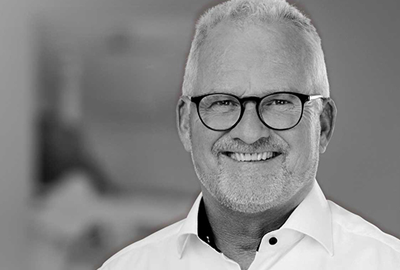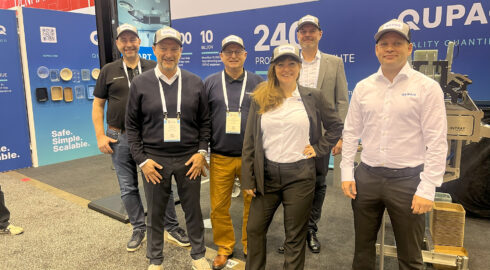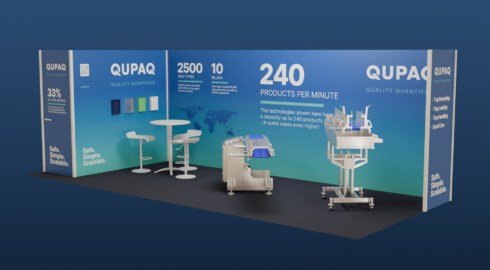A Closer Look: Unraveling End-of-Line Operations in Food Manufacturing
A closer look on everything that goes on after a tray has been sealed in the packaging area known as End of Line.
PART 2:
From Tray Sealing to Warehouse
In the first part of this series, we looked at all the things going on preparing food in trays and getting them ready for tray sealing. There are still many steps to cover before the products are ready to ship to retailers. As with tray packaging, the End-of-Line (EOL) have many vital subtasks to ensure product quality and bulking products together on pallets.
Part 1: A Closer Look: Unraveling Tray Packaging Operations in Food Manufacturing
Food products are in essence very different, and not all subtasks are valid for all segments and types of food. But in a broader view, every topic here is something every food manufacturer should consider addressing.
1. Tray Handling
When the sealed trays exit the tray sealer there may be a need to align them, diverge, equalize the flow, or get the trays running in a single lane. This depends on how the sealer operates.
QUPAQ have quite a few solutions for tray handling, including conveyors, that prepare the trays for pick and place – either automatic pick and place or manual.
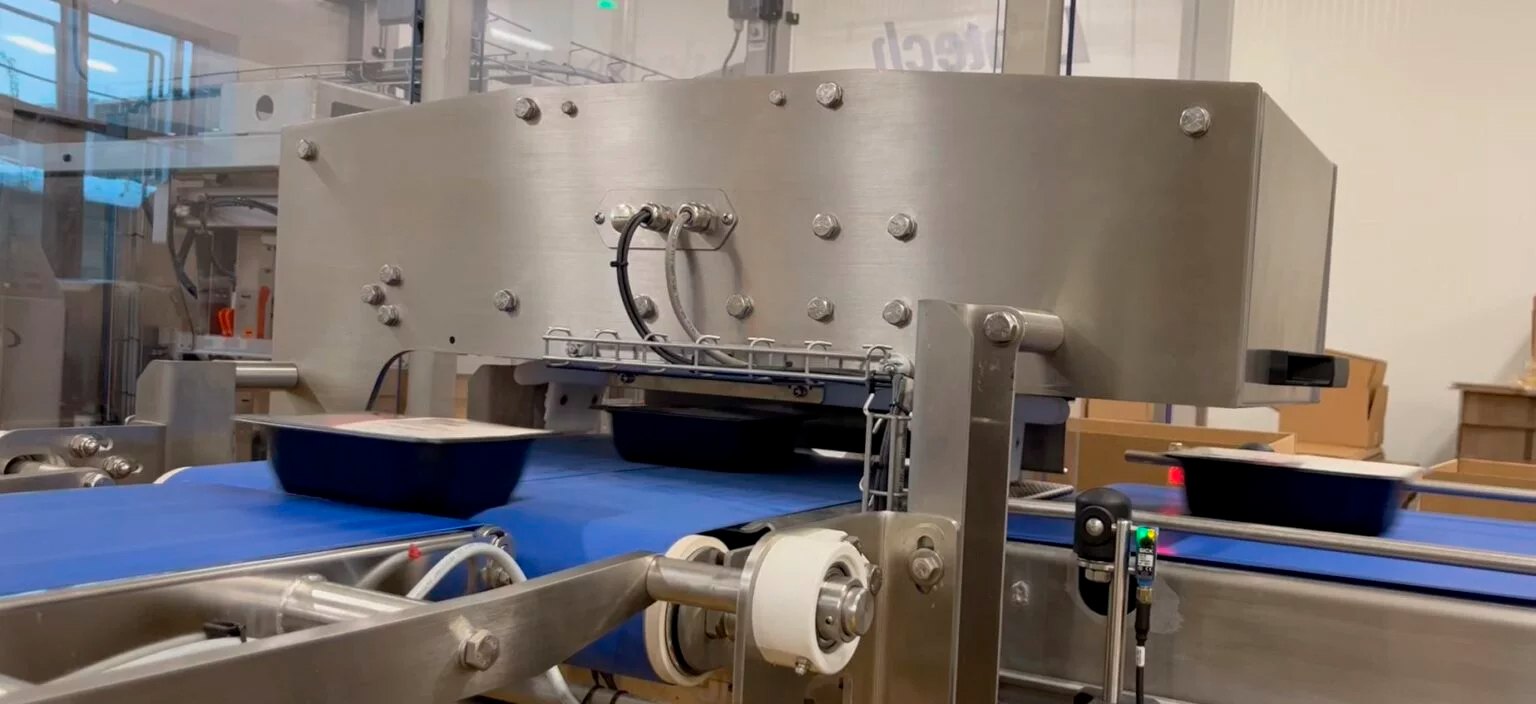
The QUPAQ Overpusher pushes trays 90 degrees from one conveyor to another, turning them from short side leading to long side leading – or vice versa.
2. Quality Control
Before we are ready to pack the sealed trays into cartons, we must ensure that the product quality meets the standards. There are many different types of Quality Controls that could be set in place. Examples of these could be:
- Seal testing
- Check weighers
- Metal detection
- X Ray
The quality will also be controlled later on in the process. However, it makes sense to control the product at this stage, so it can be rejected if it is faulty and therefore not affect the capacity down the line.
QUPAQ can deliver any type of Quality Control in the projects we conduct.
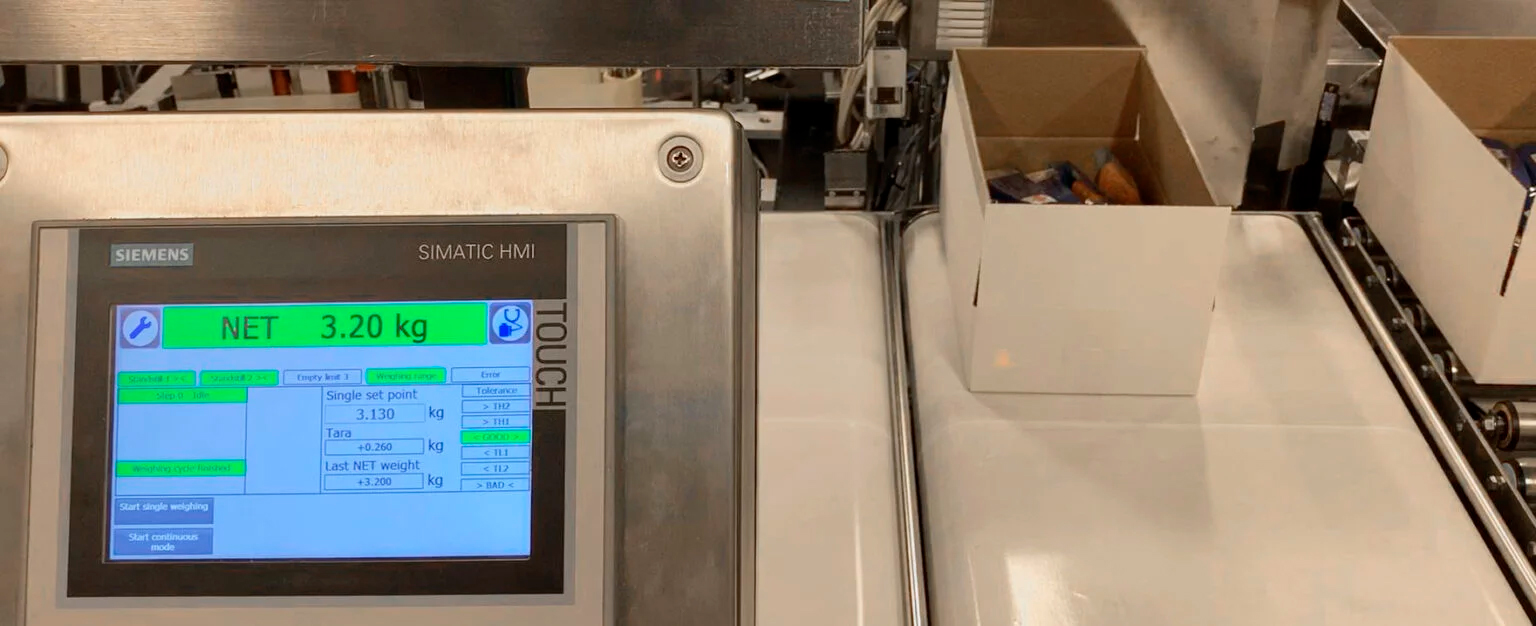
Checking the weight of the product is a simple Quality Control to perform.
3. Rejection Handling
Rejection Handling where discarded products need to be disassembled and recycled will be a major point of development in the years to come. Hence, knowing full well that it is unavoidable, we must ensure that as few products as possible get rejected.
The amount of food waste that occurs before products arrive at retailers is significant and must be brought down. For instance, if a tray with e.g., minced meat is not sealed properly, rejection handling should ensure that the meat is recycled on the line. As a result, rejection handling will decrease the carbon footprint and also the cost per product. Some statistics show that as much as 1/3 of all food is wasted before even reaching the retailer. A huge growth in Food Waste Management is foreseen in the coming years.
4. Labelling
Now we can label trays knowing that they meet the quality and standards we want. This label should of course also be tested to ensure it is correct.
Today, labels are coming in a wide variety, and they are no longer just a sticker that is put on products. Labels can be wrapped around the tray and be made of many different materials.
QUPAQ have partners who work with all types of labels, whom we include in the projects we build.
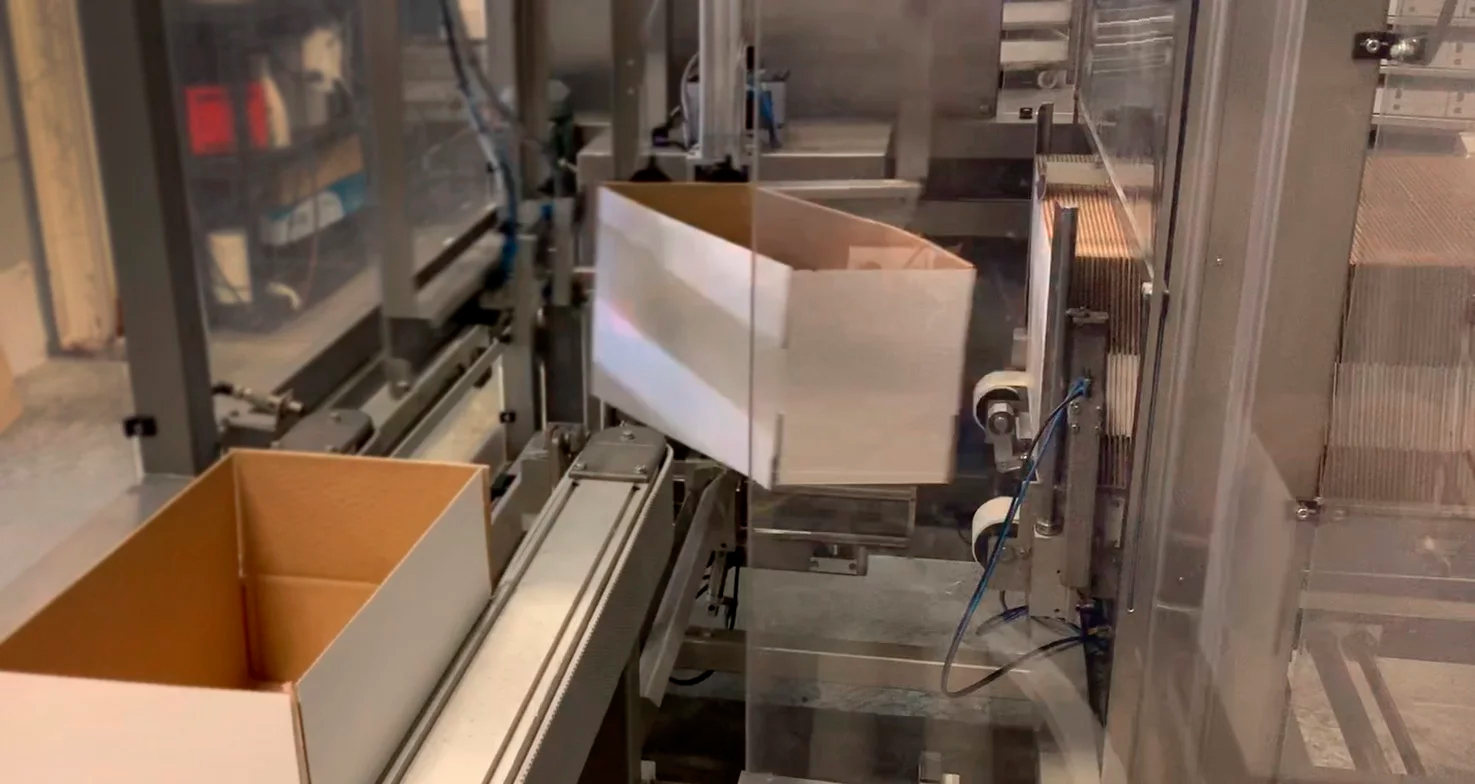
A Case Erecter ‘assembles’ the cases and boxes for End of Line packaging.
5. Box / Case Erecter
On a separate line we now need to assemble the carton boxes or cases that we will put the trays into. These machines are called Case erecters or Box erecters, in which you insert at stack of unassembled boxes and the machines erect them.
It varies how boxes and cases are held together: It could be glue, adhesive tape or staplers.
After this, the assembled boxes run on a separate line towards the Pick and Place operation.
6. Pick and Place
The Pick and Place operation packs a given number of products into boxes. Two lines run into the machine and a robot grips the trays and positions them effectively in a box, which then continues down the line.
Doing this with robots, is a very efficient way to handle a large number of products. Considering the weight of all the products that needs to be packaged during a day, it is not a job to envy.
A video showcase of some of our technologies mentioned here in operation at Himmerlandskød.
Pick and Place robots come in many different configurations and with varying flexibility. The CUBE from QUPAQ is a versatile solution built for food manufacturing specifically. It is capable of any Pick and Place operation as it has grippers tailored for the job and is easy to change for new operations. In total, this makes it a future-proof solution.
7. Box Closer
Hereafter, the filled boxes must now be closed, sealed and labelled. Again, there are multiple ways of doing this, depending on the box, its type and size, and how it is constructed. Typically, two flaps are bent down, and the box gets a strip of tape along the joint.
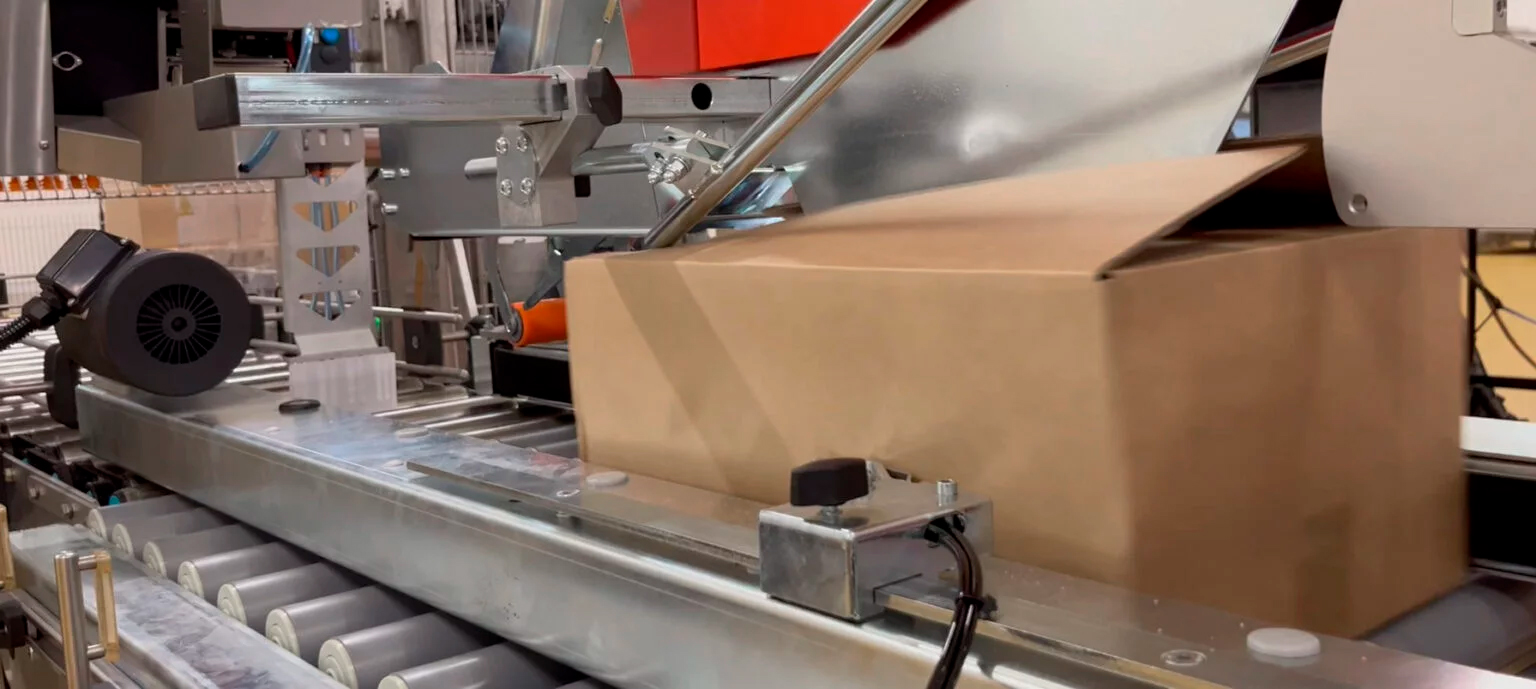
When the products are placed into cases they are ready to be closed with Box Closing technology.
8. Palletizing
Just like the trays being picked and placed into the boxes, the boxes must now be picked and placed on a pallet. It is an entirely different scale though, considering the weight of the boxes. Heavy duty robots are needed for this behind a security fence.
There are many highly proven solutions for Palletizing today, and the operation is considered a must for automation. QUPAQ of course also deliver Palletizing robots with our own software in the mix, to allow for more flexibility.
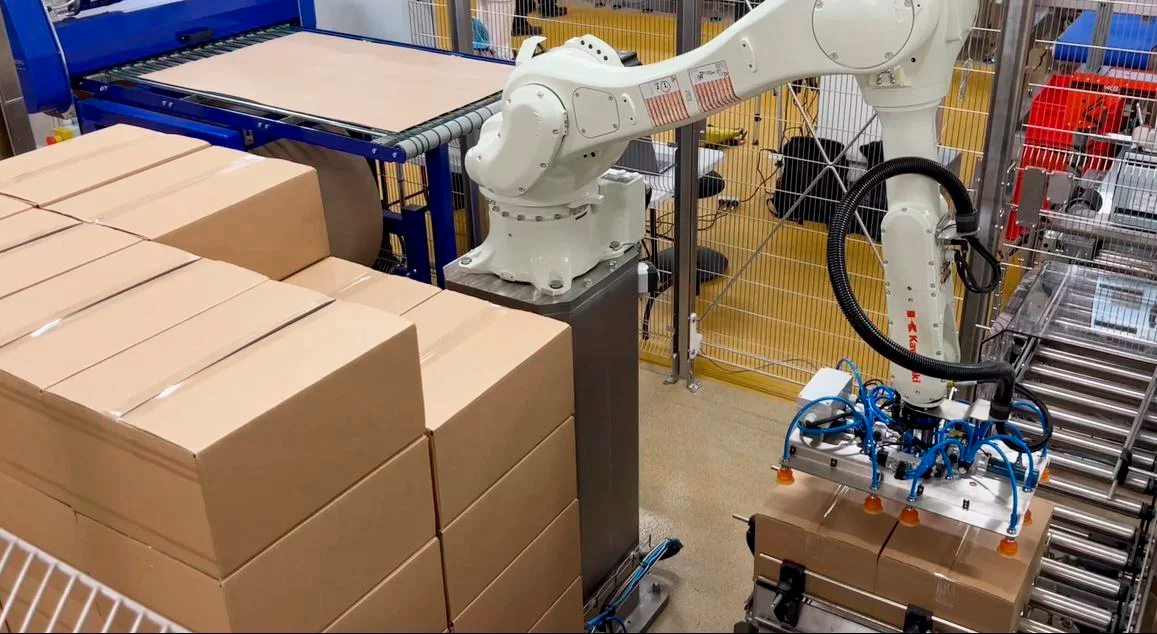
Get a heavy-duty palletizing robot for the heavy lifting.
Taking all of the above-mentioned points into consideration, we recommend using as few different tech vendors as possible on a food production line. The more providers used, the more dialogue between parties is needed, and ensuring that all of them comply with the many regulations that are in play is almost a project on its own. Even if there are many different subtasks and technologies mentioned here, most of them are not rocket science.
Here, we suggest that you focus on the pick and place robot, the palletizing robot and whatever is needed to ensure quality control of the products in question. This will help you ensure that compatibility is proven and that everything is in good sync with each other. As a result, this can lower the complexity greatly which furthermore results in project success.

